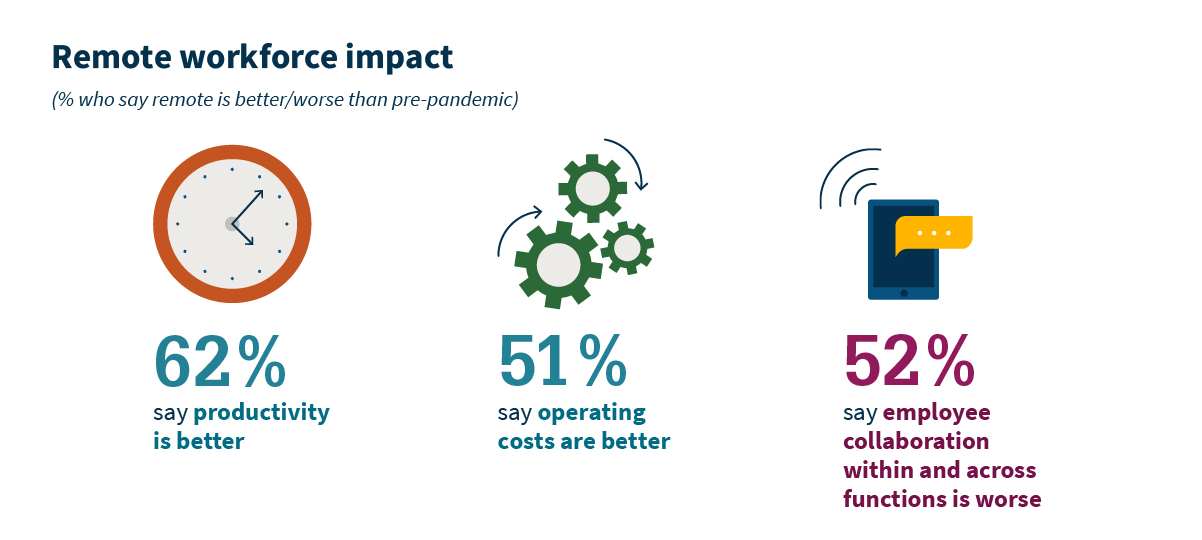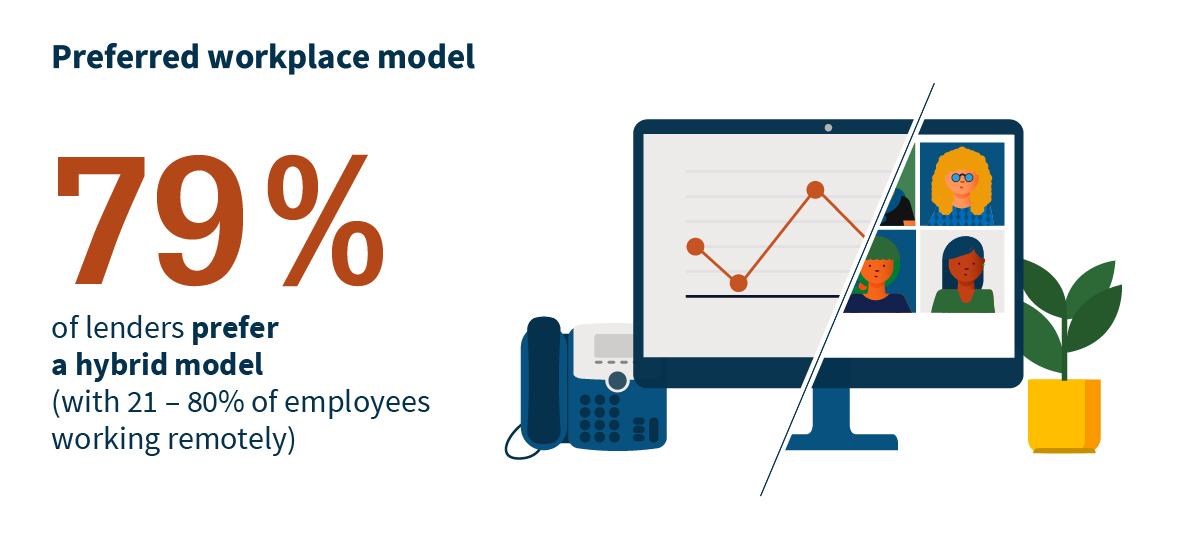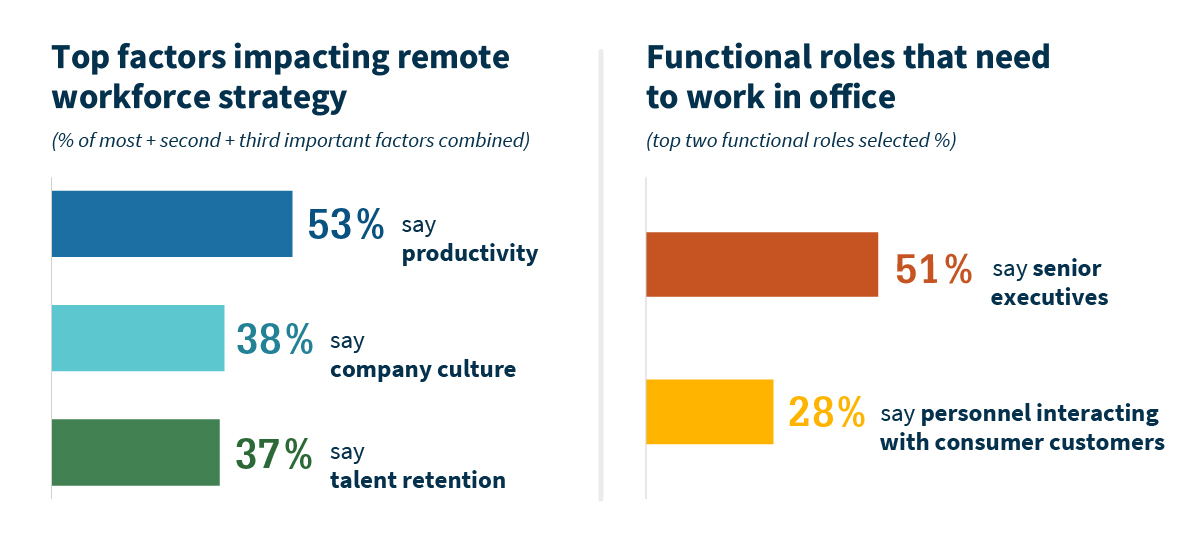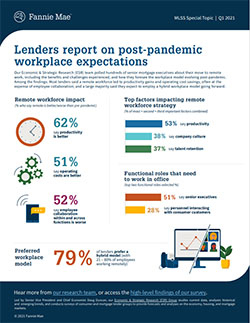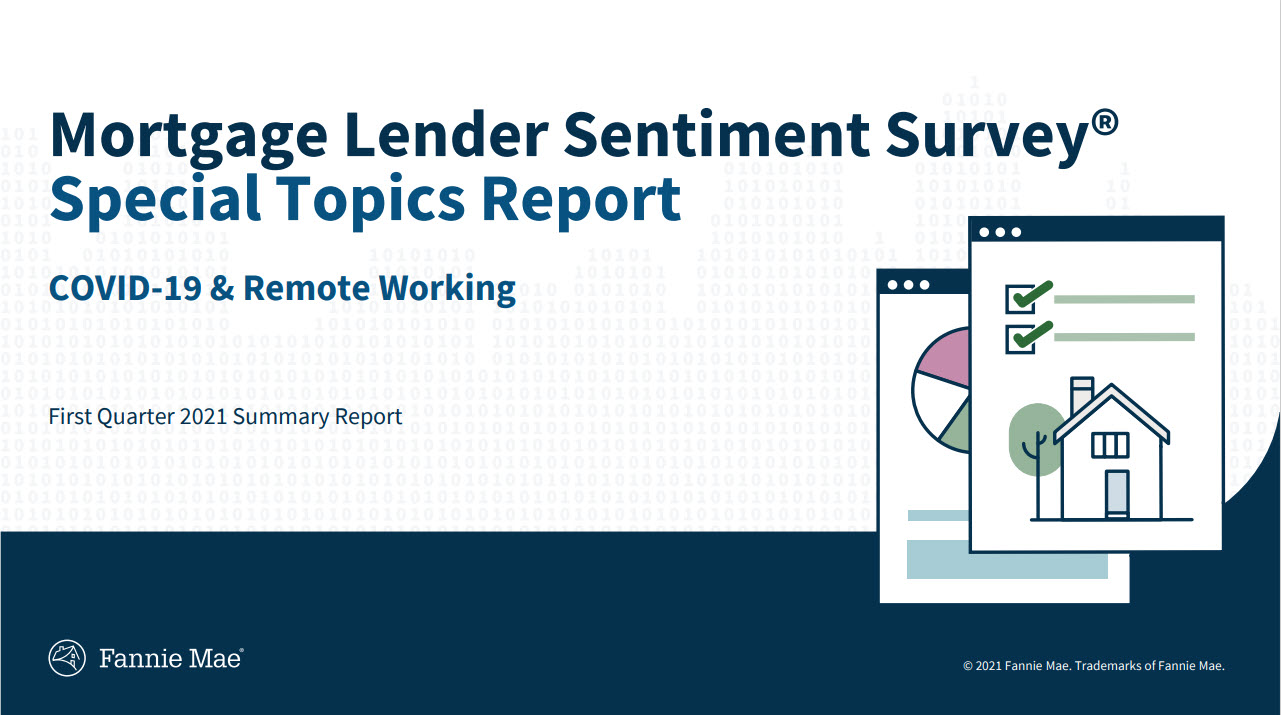Lenders Report on Remote Work Productivity and Post-pandemic Workplace Plans
While a majority of lenders reported that working remotely improved productivity and lowered operating costs, post-pandemic, most lenders indicated a preference to employ a hybrid model utilizing a mix of remote and in-office workforces. Survey respondents noted that senior management and customer-facing personnel are the likeliest to need to work at the office after the pandemic.
The COVID-19 pandemic pushed millions of people to shift to remote work. With vaccination efforts ongoing, a common question is being asked of many businesses: To what extent will remote work persist post-pandemic? In early February, using our Mortgage Lender Sentiment Survey®, we asked over 200 senior mortgage executives about their move to remote work, including the benefits and challenges experienced, and how they foresee their workplace model evolving after virus-related lockdown and social distancing measures are fully eased.
A large majority of lenders (73 percent) reported a significant increase in their remote workforce compared to the pre-pandemic era. More than half of lenders said shifting to a remote workforce improved productivity and lowered operating costs; however, a majority also reported worse employee collaboration within and across business functions.
Looking longer term, most lenders expect the share of employees working remotely or in a hybrid model to be higher post-pandemic than pre-pandemic. This includes employees who may split work between in-office and remote setups. Additionally, 77 percent of lenders said they anticipate an increase in employee requests for long-term or permanent remote work arrangements.
Despite this expectation, most lenders (79 percent) reported a preference for a hybrid model featuring a mix of remote and in-office workforces. When considering their workplace strategy, lenders cited productivity as the most important factor, followed by company culture, talent retention, and customer experience. Among the lenders who expect their remote workforce to decrease post-pandemic, they expressed greater concern with business process flows and talent onboarding and integration.
We also asked lenders which employees will most likely need to return to in-office work. Senior management were the most frequently cited; the rationale being that the in-person executive presence helps facilitate communication, collaboration, and decision-making. The second-most cited employee type was customer-facing personnel, as many consumers prefer face-to-face interactions, and lenders indicated this to be key to success. Other functional roles, including loan officers, post-closing support staff, and collateral handling/shipping staff, were also cited as likely to be needed at the office.
Overall, the survey results indicated that while remote work has been a success, as measured by productivity gains and operating cost savings, the physical office will also play an important role in fostering collaboration, solving complex challenges, and generating ideas. The shift to remote work in 2020 coincided with loan origination volumes reaching historical highs. Despite capacity constraints and the challenge of skyrocketing consumer demand, lenders commented that remote work had the effect of making many employees feel siloed, which made it difficult to communicate day-to-day business challenges and assign resources accordingly. Additionally, although the industry has made tremendous strides leveraging digital technology to streamline the mortgage process, many lenders continue to consider human interaction critical to cultivating trust and business relationships.
From a technology perspective, lenders appear much less concerned with remote-work technology capabilities and information-technology (IT) security, suggesting that investments made to IT infrastructure and digitization over the past few years are paying off. These tech capabilities should enable employers not only to recruit talent without geographic limitations, but to also better retain talent considering that many lenders foresee employee requests for permanent remote work arrangements to increase, perhaps foreshadowing the trend of a distributed operational workforce.
A workplace model might emerge among mortgage lenders that features managerial roles and consumer-facing personnel working in central offices while more operational roles work remotely in geographically diverse locations. Through a hybrid work model, organizations expect to execute on improved flexibility and reap the benefits of enhanced productivity, an expanded talent pool, and potentially reduced operating costs. Even so, well-known challenges to remote work and the hybrid workplace model remain, including how to build a strong corporate culture, engage employees, and collaborate to solve issues. Further research may need to be done in the future to assess how companies, including mortgage lenders, address these challenges.
To learn more, read our Fannie Mae Mortgage Lender Sentiment Survey Special Topic Report, “COVID-19 and Remote Working.”
Mark Palim
Vice President and Deputy Chief Economist
April 20, 2021
The author thanks Dan Miller, Steve Deggendorf, Doug Duncan, and Li-Ning Huang for valuable contributions in the design of the research creation and creation of this commentary. Of course, all errors and omissions remain the responsibility of the author.
Opinions, analyses, estimates, forecasts and other views of Fannie Mae’s Economic & Strategic Research (ESR) group or survey respondents reflected in this commentary should not be construed as indicating Fannie Mae's business prospects or expected results, are based on a number of assumptions, and are subject to change without notice. How this information affects Fannie Mae will depend on many factors. Changes in the assumptions or the information underlying these views could produce materially different results. The analyses, opinions, estimates, forecasts, and other views published by the ESR group represent the views of that group or survey respondents as of the date indicated and do not necessarily represent the views of Fannie Mae or its management.

